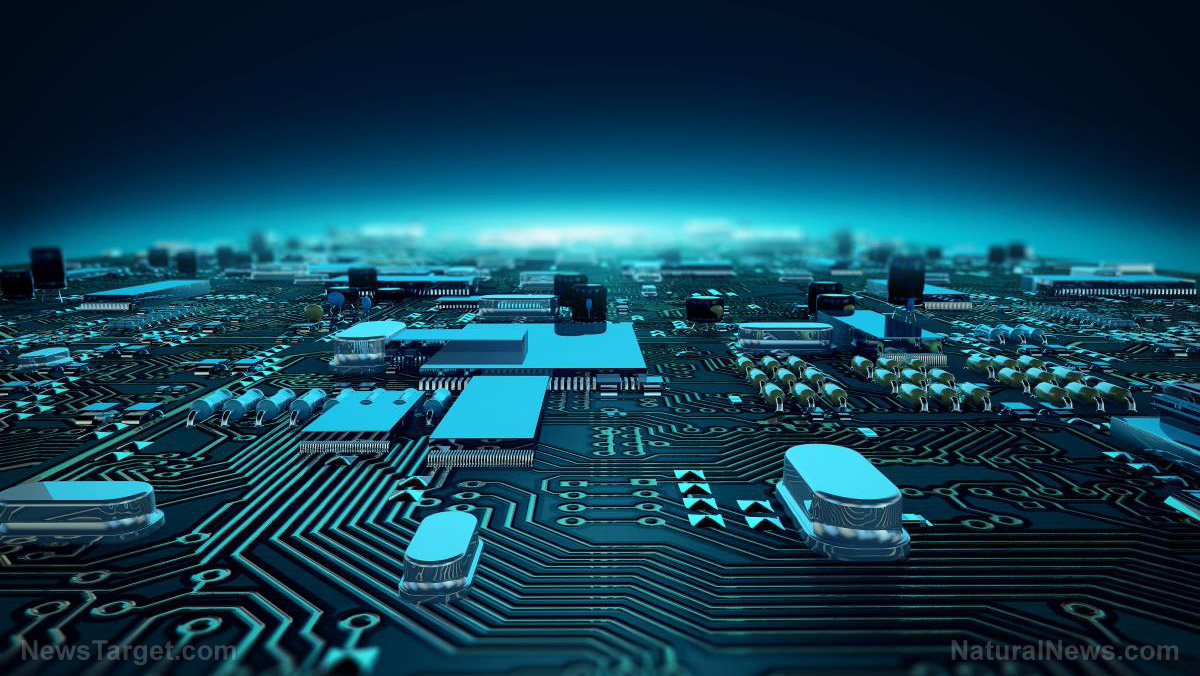New electronic paper is thin, flexible, and displays the full spectrum of colors like a standard LED
09/13/2018 / By Edsel Cook

We may be seeing a new energy-efficient type of electronic paper in the near future. An article in Chalmers Chemistry and Chemical Engineering describes how Swedish researchers developed a prototype that possesses all of the vibrant colors of a LED display while requiring only 10 percent of the energy used by a tablet reader.
According to the recently published findings in the scientific journal Advanced Materials, the e-paper measures less than a micrometer in thickness. It is very flexible, especially when compared to its thicker and stiffer LED counterparts.
The electronic paper was developed by Andreas Dahlin and Kunli Xiong of the Chalmers University of Technology. Dahlin is an assistant professor and Xiong is his doctorate student.
The two researchers were previously looking for ways to add conductive polymers on nanoscale structures. They came to realize that their material could be adapted to make paper-thin electronic displays.
One year was all it took for them to roll out the prototype, which consists of several pixels so far. (Related: Help me, Obi-Wan: “Optical trap display” technology allows graphics projection into the air.)
Electronic paper saves energy by reflecting light instead of generating it
Dahlin explained that their electronic paper is very different from an LED or LCD display, which lights itself up from within. An e-paper passively reflects any light that hits its surface. That means it is best used in areas with strong lighting.
While it will not work very well in darkness, the new e-paper only uses 10 percent of the power consumed by earlier models of electronic paper. Given those older e-papers, in turn, use far less energy than a tablet that relies on an LED display, that translates to a lot of electricity savings.
The surface of the new electronic paper is covered in polymers that can adjust the amount of light they absorb and reflect. These polymers guide the electric signals as the latter course through the whole display. This guidance enables the paper to generate high-resolution images.
While the prototype is not yet able to be produced in large numbers, Dahlin and Xiong have built several pixels for testing purposes. The pixel-sized electronic paper can produce the red, green, and blue colors that combine into all the other colors available on an LED display. The next step for them is to build bigger pixels that can cover a big enough area to serve as a working display.
“We are working at a fundamental level but even so, the step to manufacturing a product out of it shouldn’t be too far away,” Dahlin said. “What we need now are engineers.”
Drawbacks and potential uses for the new e-paper
A potential drawback to the Chalmers-designed electronic paper is its use of gold and silver as materials. Dahlin clarified that the surface of the paper is made of gold, but it is only 20 nanometers thick in comparison to the rest of the paper, which is less than a micrometer as it is.
“But at present, there is a lot of gold wasted in manufacturing it,” he admitted. “Either we reduce the waste or we find another way to reduce the production cost.”
In his estimation, the most appropriate application for his team’s electronic paper is for displaying information in brightly lit places, such as outdoor environments or public areas. Signs and information screens made from the e-paper could replace their older, non-electronic predecessors.
E-paper equivalents would improve the flexibility of signage since the entire sign does not have to be replaced whenever it needs an update. It will also not consume as much electricity.
Learn more about upcoming technologies by visiting FutureScienceNews.com.
Sources include:
Tagged Under: breakthrough, devices, display colors, display technology, electronic paper, future science, future tech, gadgets, innovation, inventions, LED, science and technology, signs, tablets




















